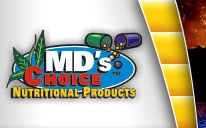Vitamins
![]()
| Vitamin B12 |
Structure
Functions
Sources
Metabolism
Requirements
Deficiency
Toxicity
- Vitamin B12 is a generic term for a group of compounds called corrinoids because of their corrin nucleus
- Corrin is a macrocyclic ring of four reduced pyrrole rings linked together with Co at its center to which is attached a nucleotide, 5, 6-dimethylbenzimidazole. (Figure 9.33)
- Also attached is one of the following:
- CN..............................Cyanocobalamin
- OH..............................Hydroxocobalamin
- H20.............................Aquocobalamin
- NO2............................Nitrocobalamin
- 5'- deoxyadenosyl......5'- deoxyadenosylcobalamin
- CH3............................Methylcobalamin
- Only 5'- deoxyadenosylcobalamin and methylcobalamin are active as coenzymes
- Conversion of homocysteine into methionine
- Requires methylcobalamin
- Necessary for converting inactive methyl folate to the active form, THF
- Cobalamin, bound to homocysteine methyl transferase apoenzyme, picks up CH3 group from N5 methyl THF and transfers it to homocysteine
- Methionine and free THF are produced
- THF can then be converted into any of its coenzyme forms
- This reaction largely explains the synergism between folate and vitamin B12
- Conversion of methylmalonyl CoA a metabolite of propionyl CoA to succinyl CoA, the Krebs cycle intermediate
- This reaction is inhibited in cobalt deficient ruminants.
- Reaction requires adenosylcolbalamin for methylmalonyl CoA mutase
- When vitamin B12 is deficient, mutase activity is impaired and methylmalonic acid accumulates in body fluids
- Isomerization of L-leucine and beta-leucine
- The enzyme leucine aminomutase requires adenosylcobalamin
- Beta-leucine generated by intestinal bacteria may be converted to L-leucine within the body
- L-leucine may be converted to beta leucine which can be transaminated in a vitamin B6 (PLP) -dependent reaction and provide an alternative pathway for leucine catabolism
- All naturally occurring vitamin B12 is produced by microorganisms
- Dietary sources for humans are animal products which derived their cobalamins from microorganisms
- Any vitamin B12 in plant foods could probably be traced to microorganisms
- Contamination with manure
- Presence of nitrogen fixing bacteria in legume root nodules
- Contaminated hands taking food to mouth
- Food sources of cobalamins
- Adenosyl - and hydroxocobalamin
- Meat and meat products
- Poultry, fish, shellfish (clams, oysters)
- Eggs (especially yolk)
- Methyl and hydroxocobalamin
- Milk and milk products (cheese, yogurt)
- Cyonocobalaman
- Tobacco
- Commercially available vitamins (along with hydroxocobalamin)
- Within the body, cyonocobalamin is converted to aquo- or hydrocobalamin
- Adenosyl - and hydroxocobalamin
- Absorption and transport
- Ingested cobalamins are released from polypeptides in foods by the gastric proteolytic enzyme pepsin
- Once released from foods, vitamin B12 absorption involves 2 proteins
- Intrinsic factor (IF), a glycoprotein synthesized by gastric parietal cells
- R proteins which have a high affinity for cobalamins are found in body fluids
- Free cobalamin complexes with R protein
- Complex moves into the small intestine
- Pancreatic proteases in the duodenum hydrolyze R protein and release cobalamin
- R proteins may protect vitamin B12
- In the proximal small intestine, IF binds cobalamin released from R protein
- Cobalamin-IF complex travels to ileum where receptor sites for vitamin B12 are present
- Peak levels in blood not reached before 8-12 hr after ingestion
- With pharmacologic doses of vitamin B12, passive diffusion accounts for much of the absorption (thus effectiveness of high vitamin B12 levels in treatment of pernicious anemia)
- Much of cobalamin in bile and other intestinal secretions can be reabsorbed
- Following absorption, cobalamins bind to transcobalamins (TC) which carry them to tissues
- TCII also assists uptake of cobalamin by tissues which have receptors for TCII
- Cobalamins with TC are taken up by endocytosis
- Within the lysosome, TCII is degraded and hydroxycobalamin is released
- Hydroxycobalamin is converted to the active coenzyme forms, methylcobalamin and adenosylcobalamin
- Vitamin B12 is stored in the liver for up to years (other water soluble vitamins are not stored)
- Excretion
- Most of cobalamin excretion occurs in feces via bile but 65-75% of that secreted into the gastrointestinal tract is reabsorbed.
- Little urinary excretion occurs.
- Whole body turnover of vitamin B12 is approximately 0.1% per day.
- Recommended allowances
- Human = 2 micrograms per day
- Poultry = 2-4 micrograms per pound of diet
- Swine = 5-10 micrograms per pound of diet
- Factors increasing requirement
- Vitamin C in doses of 500 mg or more with meals or up to 1 hr after a meal may diminish vitamin B12 availability or destroy it
- Pancreatic insufficiency could interfere with release of cobalamin from R protein
- Deficiency of intrinsic factor (pernicious anemia)
- Human- pernicious anemia
- Macrocytic anemia
- Megaloblastic bone marrow
- 3Achlorohydria
- Glossitis
- Neurological manifestations
- Peripherial neuritis
- Degenerative lesions of spinal cord
- Paresthesia (abnormal skin sensation)
- Chicks
- No anemia
- Reduced growth
- Reduced hatchability
- Chicks from deficient eggs have muscle and leg abnormalities (perosis)
- Swine
- No anemia
- Reduced growth, rough hair coat, dermatitis
- Nervous and irritable
- Sheep and cattle
- B12 normally synthesized in rumen
- Lack of cobalt
- Anemia
- Loss of appetite
- Emaciation
- Urinary excretion of methylmalonic acid
- No clear toxicity from massive doses of vitamin B12 has been reported
![]()
Vitamins

For individual consultation or questions about our products, call
1-800-628-0997
Click Here for a Printable Version of This Page
